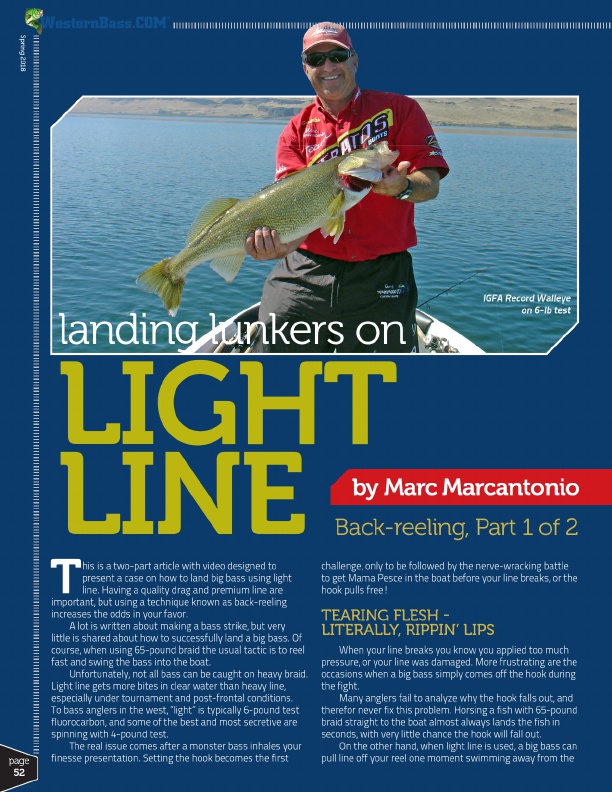
®
Spring 2018
landing lunkers on
IGFA Record Walleye
on 6-lb test
LIGHT
LINE
by Marc Marcantonio
Back-reeling, Part 1 of 2
page 52
T
his is a two-part article with video designed to
present a case on how to land big bass using light
line. Having a quality drag and premium line are important, but using a technique known as back-reeling
increases the odds in your favor.
A lot is written about making a bass strike, but very
little is shared about how to successfully land a big bass. Of
course, when using 65-pound braid the usual tactic is to reel
fast and swing the bass into the boat.
Unfortunately, not all bass can be caught on heavy braid.
Light line gets more bites in clear water than heavy line,
especially under tournament and post-frontal conditions.
To bass anglers in the west, “light” is typically 6-pound test
fluorocarbon, and some of the best and most secretive are
spinning with 4-pound test.
The real issue comes after a monster bass inhales your
finesse presentation. Setting the hook becomes the first
challenge, only to be followed by the nerve-wracking battle to get Mama Pesce in the boat before your line breaks, or the hook pulls free!
TEARING FLESH - LITERALLY, RIPPIN’ LIPS
When your line breaks you know you applied too much pressure, or your line was damaged. More frustrating are the occasions when a big bass simply comes off the hook during the fight.
Many anglers fail to analyze why the hook falls out, and therefor never fix this problem. Horsing a fish with 65-pound braid straight to the boat almost always lands the fish in seconds, with very little chance the hook will fall out.
On the other hand, when light line is used, a big bass can pull line off your reel one moment swimming away from the